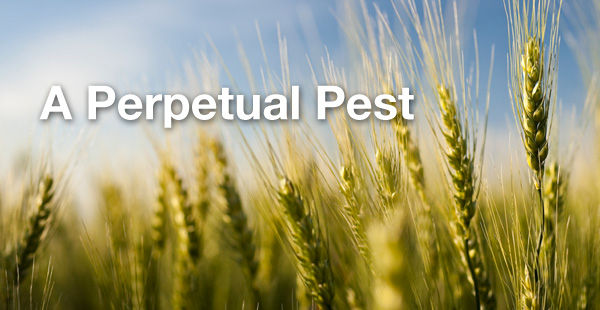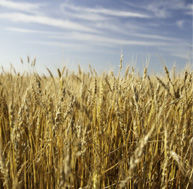Pest Profile: Wheat Scab
May 13, 2019

Fusarium head blight (FHB), commonly known as scab, is a destructive fungal disease that infects the developing grain heads of wheat and barley. Caused by several species of the fungal pathogen Fusarium, scab has been a headache for the cereals industry since the turn of the century. It is important that growers are familiar with this potentially damaging disease and the latest technologies designed to reduce scab development in their crops.
The Economic Costs of Fusarium Head Blight
High levels of Fusarium head blight will not only result in significant yield loss, but also can reduce the quality and feeding value of the grain—both serious problems. The fungi that cause wheat scab may produce mycotoxins that are toxic to livestock and humans, thus dramatically lowering the market value of the crop. Further losses to growers have occurred because of poor test weights, floret sterility, restricted crop rotations, limited variety selection and the cost of control measures.
When conditions are favorable for the development of wheat scab, growers should consider applying a foliar fungicide. Favorable conditions typically include regular rainfall and excessive humidity.

High levels of Fusarium head blight will not only result in significant yield loss, but also can reduce the quality and feeding value of the grain—both serious problems.
Protect Crop Yields and Quality
Every acre counts. Seed, fertilizer and fuel are just some of the many costs growers have when producing high-quality crops. When the threat of a potentially devastating disease like scab exists, risk mitigation tools are critical to maximizing your return on investment.
In extensive U.S. field trials, Prosaro® has proven effective in fighting scab and delivering average yield increases of 7 bu/A in a variety of weather and disease pressure situations.
Extensive testing at multiple locations in the U.S. over several years by university Extension specialists, private producers and Bayer researchers has shown that Prosaro fungicide provides outstanding activity on head scab and foliar diseases in wheat. Prosaro stops the penetration of the fungus into the plant and reduces deoxynivalenol (DON) levels. This is a distinct advantage over using strobilurin-containing fungicides known to increase DON levels if applied at early flowering timing. Prosaro fungicide improves grain quality and maximizes yield through its unbeatable spectrum of disease control, increasing profit potential. With its two very effective active ingredients, Prosaro provides unsurpassed control of both head and leaf diseases including tan spot, septoria and rust species.
Learn more about Prosaro fungicide at Prosaro.us.
©2019 Bayer Group. Always read and follow label instructions. Bayer, the Bayer Cross and Prosaro are registered trademarks of Bayer Group. Prosaro is not registered in all states. For additional product information, call toll-free 1-866-99-BAYER (1-866-992-2937) or visit our website at www.CropScience.Bayer.us. Bayer CropScience LP, 800 North Lindbergh Blvd. St. Louis, MO 63167. CR0319PROSARB072S00R0
Sources:
De Wolf, Erick. "Disease Information." Fusarium Head Blight Prediction Center. The Pennsylvania State University, 2003. Web. 11 Aug 2011. http://www.wheatscab.psu.edu/disease_info.htm.
Lipps, Patrick. "Head Blight or Scab of Small Grains." Ohio State University Extension Fact Sheet. Ohio State University Extension,1996. Web. 11 Aug 2011. ohioline.osu.edu.
"Fusarium Focus." U.S. Wheat & Barley Scab Initiative. 3.2 (2001): 1-3. Web. 11 Aug. 2011. www.scabusa.org.
Bayer CropScience. Prosaro Product Bulletin. Research Triangle Park: Vance Publishing, 2011. Web. cropscience.bayer.us.
Cowger, Christina, and Abbey L. Sutton. "The Southeastern U.S. Fusarium Head Blight Epidemic of 2003." Plant Management Network, 2005. Web. 7 Nov 2011. www.plantmanagementnetwork.org